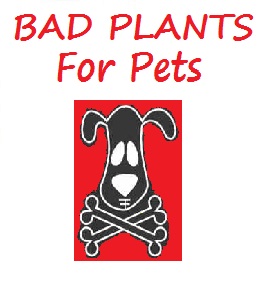Fleabane

Showy Daisy (Erigeron speciosus), Aspen fleabane, Horseweed, Seaside Daisy, or Showy fleabane is a herbaceous perennial flowering plant known and cultivated for the showy, nearly 2 inch wide flower heads the plant produces when in bloom. The plant grows clusters of leafy stems 6” to 30” tall grown from a woody rootstock, atop of which sits a single flower head. The flower disk is yellow-orange with narrow pedals that range in color from narrow pink, to lavender, or white. The lower leaves of this plant tend to fall off as the season advances.
There is very little information regarding the specific toxicity of this plant, and most sources detailing toxic plants fail to mention it. What is known is that the plant contains “unknown” natural pesticides and/or repellants, as well as naturally occurring fungicides to protect it from both insects and disease. In fact in holistic circles it is recommended that it be planted around gardens and homes to repel nuisance insects or that the leaves be pulled and smeared on clothing or pets for the same reason.
The sparse amount of information that is available notes that ingestion by a pet is rarely serious. The only symptoms documented are nausea, mild vomiting, and diarrhea; with full recovery occurring in 1 to 24 hours. As plants can contain any number of naturally occurring chemical compounds, and green vegetative matter is not necessarily a natural food source for dogs or cats, for either or both of these reasons pets could find ingestion of the plant disagrees with their stomach. Since this plant is only mildly toxic, ingestion by a pet is rarely if ever a life threatening emergency. Some sources cite the plant as being toxic to horses as well, although this author could find no other documentation, scientific, veterinary or otherwise to verify this. In order to prevent a possibly ill pet, exercise caution and common sense and prevent pets with a propensity for chewing on vegetative matter from accessing areas containing this plant.
Avoid further ingestion of the plant and consult a veterinarian. Life threatening intoxication from ingestion of the plant is basically unheard. In regards to a specific treatment regimen for illness relating to the ingestion of the plant common sense symptomatic care will probably be all that is required. If the ingestion was recent remove any existing plant matter from the mouth and flush thoroughly with water. If vomiting does not occur it may be induced by giving and emetic such as 3% hydrogen peroxide orally at a dose rate of 1 teaspoon per 10 lbs of body weight. The pet will more than likely start vomiting spontaneously without the help of an emetic, as their body tries to expel this non digestible material. The universal antidote, activated medical charcoal may also prove to be of some use in absorbing the toxins. If the pet ingested a large quantity of plant material then it may be beneficial to empty the stomach contents by way of gastric lavage.
Ensure the pet gets plenty of fluids to avoid possible dehydration caused by diarrhea. To alleviate the gastrointestinal upset and diarrhea; Kapectolin may be given at a dose rate of 1 to 2 ml/kg four times a day. Kapectolin provides a coating action that protects the stomach lining. Sucralfate may also be used as for gastrointestinal irritation as it reacts with the acids in the stomach to form a paste-like material capable of acting as a barrier between the stomach and its contents. Sucralfate is typically given to dogs weighing more the 60lbs: 1g every 6 to 8 hours; for dogs under 60 lbs: 0.5g every 6 to 8 hours; Cats: 0.25g every 8 to 12 hours to reduce irritation of the stomach and intestines. The prognosis will depend on the amount ingested and the resultant severity of the intoxication. Serious intoxications of animals are exceptionally rare and in most cases symptoms will be limited to gastrointestinal upset (vomiting and diarrhea). With symptomatic care most animals will make a full recovery in a few hours to a few days.




